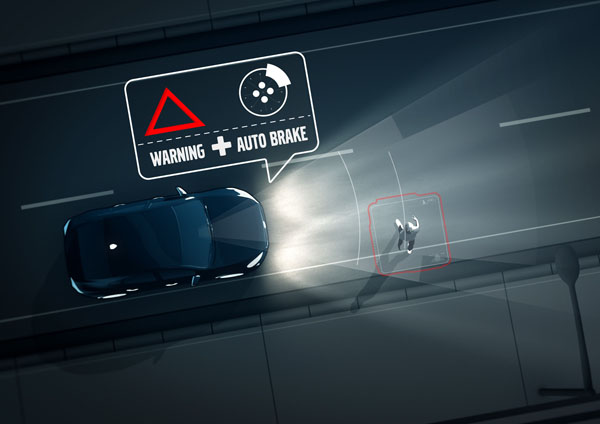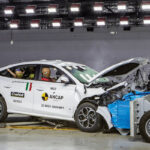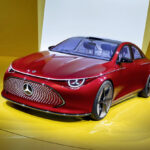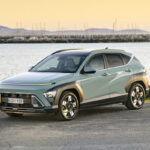
Volvo cars will soon be able to scan 360 degrees around themselves to look out for possible dangers, then act upon them
Volvo Cars has publicly stated that by 2020, no-one should be killed or seriously injured in a new Volvo. An impossible situation to our way of thinking, but most certainly a target worth aiming at.
The Swedish company has brought us up to date on the many directions it is taking to work towards its ambitious plan. What Volvo calls ‘SPA’ (Scalable Platform Architecture) is aimed at offering protection in crashes.

The new SPA safety cage has a mix of different steel grades and has been made stronger and smarter. Added strength is achieved by more extensive use of boron steel.
“We retain our uncompromising attitude to offering superior crash protection,” says Jan Ivarsson, Senior Manager, Safety Strategy and Requirements at Volvo Cars. “The new architecture opens up for further improvements. Seven percent of the safety cage in the original Volvo XC90 was made of hot-formed boron steel.
“The structure in the upcoming all-new XC90 features over 40 percent hot-formed steel, which translates into significantly improved strength but without adding mass or weight.”

Even more importantly are features that help the driver avoid crashes, or even take control of the car if the electronics feel the driver isn’t responding correctly.
Ground-breaking new electrical architecture consists of a network with four domain masters: vehicle dynamics, safety, car body and infotainment.
“Each master can be connected to every single unit in the whole architecture. This means that we have one single nerve system with full control over all the connections in the vehicle. This is unique in the industry,” says Peter Mertens, Senior Vice President, Research and Development, Volvo Car Group.
The driver remains at the core of Volvo’s approach. He or she is surrounded 360 degrees by zones extending from technology cushioning them, as well as in contact with the world.
Existing safety technologies – such as safety belts, pre-tensioners, whiplash protection system, airbags and inflatable curtains – are continuously being improved.
Volvo’s smart belt pre-tension systems increases the retention of the occupants before and during a collision. For example, the rearward-facing radar is used to detect a rear impact. This allows the safety belts to be tightened in advance to keep the occupants in place.
Camera, radar and sensor technologies are extended to detect more objects around the car and to offer support at higher speeds and in complex situations, such as in crossroads.
“One of the most important focus areas within collision-avoidance is to help prevent unintentional road departures by autonomous steering intervention in critical situations. Unintentional road departure is the collision type that results in most deaths and serious injuries in modern traffic,” says Jan Ivarsson.
The new Volvo features also include detection and automatic braking for large animals and pedestrians that even work when driving in the dark.
The sensors used by the collision-avoiding systems aim to make driving easier by simplifying complex traffic situations. This includes Adaptive Cruise Control with steer assist, which will be introduced in the all-new Volvo XC90. The car automatically follows the vehicle ahead in queues.
To exchange communication with other vehicles, the infrastructure extends the driver’s theoretical field of vision beyond the capacity of the camera, radar and sensors. With this Car2Car and Car2Infrastructure technology in place, vital information can be shared and exchanged.
The desire to stay online too often makes the driver take their attention from driving, a killer situation at times. Volvo believes that autonomous drive will play an important role in preventing this. So the SPA is also designed to accommodate the implementation of autonomous technologies – all the way to self-driving cars in the future.
“Allowing the car to act automatically is crucial when moving towards the vision that future cars will not crash at all. The technologies enabled by our new Scalable Product Architecture will bring us significantly closer to this ultimate goal,” concludes Jan Ivarsson.











